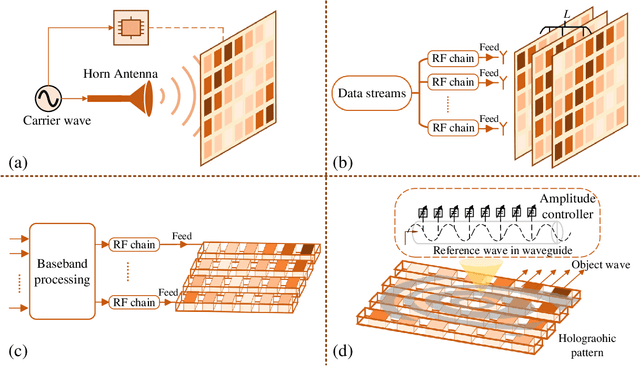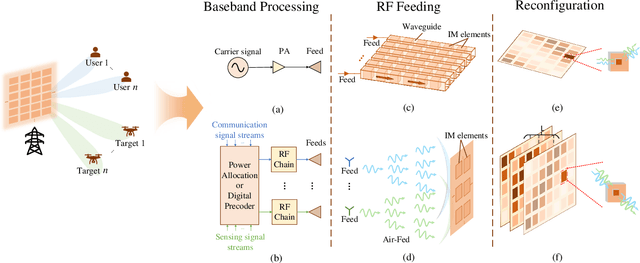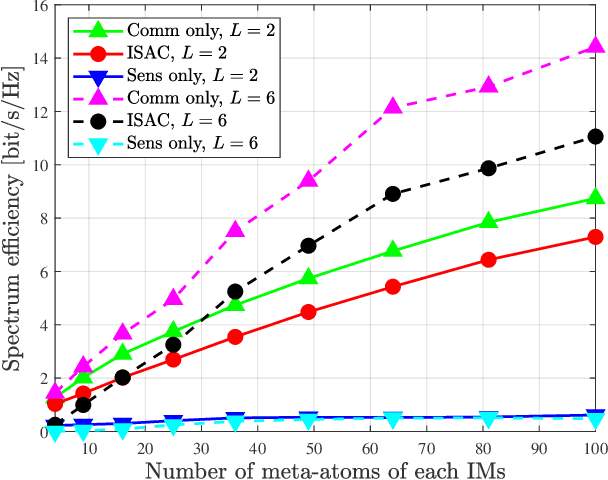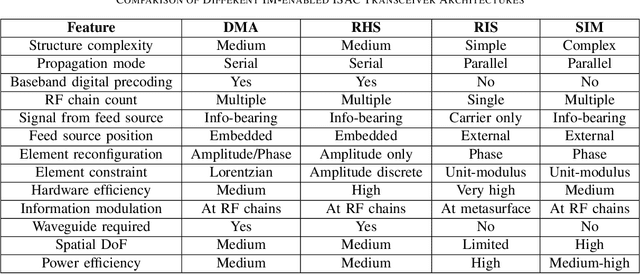Ruiqi Liu
CBPNet: A Continual Backpropagation Prompt Network for Alleviating Plasticity Loss on Edge Devices
Sep 19, 2025Abstract:To meet the demands of applications like robotics and autonomous driving that require real-time responses to dynamic environments, efficient continual learning methods suitable for edge devices have attracted increasing attention. In this transition, using frozen pretrained models with prompts has become a mainstream strategy to combat catastrophic forgetting. However, this approach introduces a new critical bottleneck: plasticity loss, where the model's ability to learn new knowledge diminishes due to the frozen backbone and the limited capacity of prompt parameters. We argue that the reduction in plasticity stems from a lack of update vitality in underutilized parameters during the training process. To this end, we propose the Continual Backpropagation Prompt Network (CBPNet), an effective and parameter efficient framework designed to restore the model's learning vitality. We innovatively integrate an Efficient CBP Block that counteracts plasticity decay by adaptively reinitializing these underutilized parameters. Experimental results on edge devices demonstrate CBPNet's effectiveness across multiple benchmarks. On Split CIFAR-100, it improves average accuracy by over 1% against a strong baseline, and on the more challenging Split ImageNet-R, it achieves a state of the art accuracy of 69.41%. This is accomplished by training additional parameters that constitute less than 0.2% of the backbone's size, validating our approach.
NEFT: A Unified Transformer Framework for Efficient Near-Field CSI Feedback in XL-MIMO Systems
Sep 16, 2025Abstract:Extremely large-scale multiple-input multiple-output (XL-MIMO) systems, operating in the near-field region due to their massive antenna arrays, are a key enabler of next-generation wireless communications but face significant challenges in channel state information (CSI) feedback. Deep learning has emerged as a powerful tool by learning compact CSI representations for feedback. However, existing methods struggle to capture the intricate structure of near-field CSI while incurring prohibitive computational overhead on practical mobile devices. To overcome these limitations, we propose the Near-Field Efficient Feedback Transformer (NEFT) family for accurate and efficient near-field CSI feedback across diverse hardware platforms. Built on a hierarchical Vision Transformer backbone, NEFT is extended with lightweight variants to meet various deployment constraints: NEFT-Compact applies multi-level knowledge distillation (KD) to reduce complexity while maintaining accuracy, and NEFT-Hybrid and NEFT-Edge address encoder- and edge-constrained scenarios via attention-free encoding and KD. Extensive simulations show that NEFT achieves a 15--21 dB improvement in normalized mean-squared error (NMSE) over state-of-the-art methods, while NEFT-Compact and NEFT-Edge reduce total FLOPs by 25--36% with negligible accuracy loss. Moreover, NEFT-Hybrid lowers encoder-side complexity by up to 64%, enabling deployment in highly asymmetric device scenarios. These results establish NEFT as a practical and scalable solution for near-field CSI feedback in XL-MIMO systems.
Intelligent Metasurface-Enabled Integrated Sensing and Communication: Unified Framework and Key Technologies
Jun 16, 2025



Abstract:As the demand for ubiquitous connectivity and high-precision environmental awareness grows, integrated sensing and communication (ISAC) has emerged as a key technology for sixth-generation (6G) wireless networks. Intelligent metasurfaces (IMs) have also been widely adopted in ISAC scenarios due to their efficient, programmable control over electromagnetic waves. This provides a versatile solution that meets the dual-function requirements of next-generation networks. Although reconfigurable intelligent surfaces (RISs) have been extensively studied for manipulating the propagation channel between base and mobile stations, the full potential of IMs in ISAC transceiver design remains under-explored. Against this backdrop, this article explores emerging IM-enabled transceiver designs for ISAC systems. It begins with an overview of representative IM architectures, their unique principles, and their inherent advantages in EM wave manipulation. Next, a unified ISAC framework is established to systematically model the design and derivation of diverse IM-enabled transceiver structures. This lays the foundation for performance optimization, trade-offs, and analysis. The paper then discusses several critical technologies for IM-enabled ISAC transceivers, including dedicated channel modeling, effective channel estimation, tailored beamforming strategies, and dual-functional waveform design.
OmniStyle: Filtering High Quality Style Transfer Data at Scale
May 20, 2025Abstract:In this paper, we introduce OmniStyle-1M, a large-scale paired style transfer dataset comprising over one million content-style-stylized image triplets across 1,000 diverse style categories, each enhanced with textual descriptions and instruction prompts. We show that OmniStyle-1M can not only enable efficient and scalable of style transfer models through supervised training but also facilitate precise control over target stylization. Especially, to ensure the quality of the dataset, we introduce OmniFilter, a comprehensive style transfer quality assessment framework, which filters high-quality triplets based on content preservation, style consistency, and aesthetic appeal. Building upon this foundation, we propose OmniStyle, a framework based on the Diffusion Transformer (DiT) architecture designed for high-quality and efficient style transfer. This framework supports both instruction-guided and image-guided style transfer, generating high resolution outputs with exceptional detail. Extensive qualitative and quantitative evaluations demonstrate OmniStyle's superior performance compared to existing approaches, highlighting its efficiency and versatility. OmniStyle-1M and its accompanying methodologies provide a significant contribution to advancing high-quality style transfer, offering a valuable resource for the research community.
ISAC Channel Modelling -- Perspectives from ETSI
May 15, 2025Abstract:Integrated Sensing and Communications (ISAC) is defined as one of six usage scenarios in the ITU-R International Mobile Telecommunications (IMT) 2030 framework for 6G. ISAC is envisioned to introduce the sensing capability into the cellular network, where sensing may be obtained using the cellular radio frequency (RF) signals with or without additional auxiliary sensors. To enable ISAC, specification bodies such as European Telecommunications Standards Institute (ETSI) and Third Generation Partnership Project (3GPP) have already started to look into detailed ISAC use cases, their requirements, and the channel models and evaluation methodologies that are necessary to design and evaluate ISAC performance. With focus on the channel model, the current communication-centric channel models like those specified in 3GPP technical report (TR) 38.901 do not cover the RF signals interactions between the transmitter, target object, receiver and their surrounding environment. To bridge this gap, 3GPP has been looking into the basic changes that are necessary to make to their TR38.901 channel model with focus on selected use cases from the 3GPP SA1 5G-Advanced feasibility study. In parallel, ETSI ISAC Industry Specification Group (ISG) has been studying the more advanced ISAC channel modelling features that are needed to support the variety of ISAC use cases envisioned in 6G. In this paper, we present the baseline and advanced features developed thus far in 3GPP and ETSI ISAC ISG, respectively, towards a comprehensive view of the ISAC channel model in 6G.
Efficient Continual Learning through Frequency Decomposition and Integration
Mar 28, 2025Abstract:Continual learning (CL) aims to learn new tasks while retaining past knowledge, addressing the challenge of forgetting during task adaptation. Rehearsal-based methods, which replay previous samples, effectively mitigate forgetting. However, research on enhancing the efficiency of these methods, especially in resource-constrained environments, remains limited, hindering their application in real-world systems with dynamic data streams. The human perceptual system processes visual scenes through complementary frequency channels: low-frequency signals capture holistic cues, while high-frequency components convey structural details vital for fine-grained discrimination. Inspired by this, we propose the Frequency Decomposition and Integration Network (FDINet), a novel framework that decomposes and integrates information across frequencies. FDINet designs two lightweight networks to independently process low- and high-frequency components of images. When integrated with rehearsal-based methods, this frequency-aware design effectively enhances cross-task generalization through low-frequency information, preserves class-specific details using high-frequency information, and facilitates efficient training due to its lightweight architecture. Experiments demonstrate that FDINet reduces backbone parameters by 78%, improves accuracy by up to 7.49% over state-of-the-art (SOTA) methods, and decreases peak memory usage by up to 80%. Additionally, on edge devices, FDINet accelerates training by up to 5$\times$.
Hierarchical Multi-Graphs Learning for Robust Group Re-Identification
Dec 25, 2024



Abstract:Group Re-identification (G-ReID) faces greater complexity than individual Re-identification (ReID) due to challenges like mutual occlusion, dynamic member interactions, and evolving group structures. Prior graph-based approaches have aimed to capture these dynamics by modeling the group as a single topological structure. However, these methods struggle to generalize across diverse group compositions, as they fail to fully represent the multifaceted relationships within the group. In this study, we introduce a Hierarchical Multi-Graphs Learning (HMGL) framework to address these challenges. Our approach models the group as a collection of multi-relational graphs, leveraging both explicit features (such as occlusion, appearance, and foreground information) and implicit dependencies between members. This hierarchical representation, encoded via a Multi-Graphs Neural Network (MGNN), allows us to resolve ambiguities in member relationships, particularly in complex, densely populated scenes. To further enhance matching accuracy, we propose a Multi-Scale Matching (MSM) algorithm, which mitigates issues of member information ambiguity and sensitivity to hard samples, improving robustness in challenging scenarios. Our method achieves state-of-the-art performance on two standard benchmarks, CSG and RoadGroup, with Rank-1/mAP scores of 95.3%/94.4% and 93.9%/95.4%, respectively. These results mark notable improvements of 1.7% and 2.5% in Rank-1 accuracy over existing approaches.
Online Statistical Inference for Time-varying Sample-averaged Q-learning
Oct 14, 2024Abstract:Reinforcement learning (RL) has emerged as a key approach for training agents in complex and uncertain environments. Incorporating statistical inference in RL algorithms is essential for understanding and managing uncertainty in model performance. This paper introduces a time-varying batch-averaged Q-learning algorithm, termed sampleaveraged Q-learning, which improves upon traditional single-sample Q-learning by aggregating samples of rewards and next states to better account for data variability and uncertainty. We leverage the functional central limit theorem (FCLT) to establish a novel framework that provides insights into the asymptotic normality of the sample-averaged algorithm under mild conditions. Additionally, we develop a random scaling method for interval estimation, enabling the construction of confidence intervals without requiring extra hyperparameters. Numerical experiments conducted on classic OpenAI Gym environments show that the time-varying sample-averaged Q-learning method consistently outperforms both single-sample and constant-batch Q-learning methods, achieving superior accuracy while maintaining comparable learning speeds.
Continual Learning in the Frequency Domain
Oct 10, 2024



Abstract:Continual learning (CL) is designed to learn new tasks while preserving existing knowledge. Replaying samples from earlier tasks has proven to be an effective method to mitigate the forgetting of previously acquired knowledge. However, the current research on the training efficiency of rehearsal-based methods is insufficient, which limits the practical application of CL systems in resource-limited scenarios. The human visual system (HVS) exhibits varying sensitivities to different frequency components, enabling the efficient elimination of visually redundant information. Inspired by HVS, we propose a novel framework called Continual Learning in the Frequency Domain (CLFD). To our knowledge, this is the first study to utilize frequency domain features to enhance the performance and efficiency of CL training on edge devices. For the input features of the feature extractor, CLFD employs wavelet transform to map the original input image into the frequency domain, thereby effectively reducing the size of input feature maps. Regarding the output features of the feature extractor, CLFD selectively utilizes output features for distinct classes for classification, thereby balancing the reusability and interference of output features based on the frequency domain similarity of the classes across various tasks. Optimizing only the input and output features of the feature extractor allows for seamless integration of CLFD with various rehearsal-based methods. Extensive experiments conducted in both cloud and edge environments demonstrate that CLFD consistently improves the performance of state-of-the-art (SOTA) methods in both precision and training efficiency. Specifically, CLFD can increase the accuracy of the SOTA CL method by up to 6.83% and reduce the training time by 2.6$\times$.
Illumination Design for Joint Imaging and Wireless Power Transfer Systems
Aug 01, 2024



Abstract:This paper presents a novel concept termed Integrated Imaging and Wireless Power Transfer (IWPT), wherein the integration of imaging and wireless power transfer functionalities is achieved on a unified hardware platform. IWPT leverages a transmitting array to efficiently illuminate a specific Region of Interest (ROI), enabling the extraction of ROI's scattering coefficients while concurrently providing wireless power to nearby users. The integration of IWPT offers compelling advantages, including notable reductions in power consumption and spectrum utilization, pivotal for the optimization of future 6G wireless networks. As an initial investigation, we explore two antenna architectures: a fully digital array and a digital/analog hybrid array. Our goal is to characterize the fundamental trade-off between imaging and wireless power transfer by optimizing the illumination signal. With imaging operating in the near-field, we formulate the illumination signal design as an optimization problem that minimizes the condition number of the equivalent channel. To address this optimization problem, we propose an semi-definite relaxation-based approach for the fully digital array and an alternating optimization algorithm for the hybrid array. Finally, numerical results verify the effectiveness of our proposed solutions and demonstrate the trade-off between imaging and wireless power transfer.
 Add to Chrome
Add to Chrome Add to Firefox
Add to Firefox Add to Edge
Add to Edge